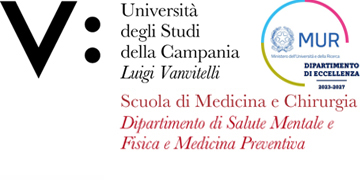Eleonora RUOCCO
Insegnamento di MALATTIE CUTANEE E VENEREE
Corso di laurea magistrale a ciclo unico in ODONTOIATRIA E PROTESI DENTARIA
SSD: MED/35
CFU: 2,00
ORE PER UNITÀ DIDATTICA: 20,00
Periodo di Erogazione: Secondo Semestre
Italiano
| Lingua di insegnamento | Italiano |
| Contenuti | Caratteristiche cliniche, patologiche e terapeutiche delle malattie infiammatorie, infettive e neoplastiche della cute e delle membrane mucose, con particolare riferimento a quelle di interesse odontostomatologico. |
| Testi di riferimento | 1. SAURAT J. DERMATOLOGIA E MALATTIE SESSUALMENTE TRASMESSE (terza edizione) ED. MASSON/ELSEVIER 2006 |
| Obiettivi formativi | Lo studente deve acquisire la capacità di identificare le lesioni cutanee e la corretta impostazione del percorso diagnostico. Lo studente deve essere a conoscenza della patogenesi, delle indagini diagnostiche e della terapia medica e chirurgica delle patologie cutanee di interesse odontostomatologico e dei segni cutanei delle più comuni patologie sistemiche. |
| Prerequisiti | Nessuno |
| Metodologie didattiche | L’insegnamento si svolgerà mediante lezioni frontali.La frequenza è obbligatoria, lo studente dovrà partecipare al 70% delle lezioni per poter accedere alla prova orale. Le presenze in aula verranno registrate mediante badge magnetico. Allo studente saranno fornite nozioni che integrano e non sostituiscono i contenuti del testo. |
| Metodi di valutazione | La prova orale intende accertare l’apprendimento delle conoscenze sulle più importanti e/o frequenti patologie della cute, comprese le infezioni a trasmissione sessuale, elencate in programma. Lo studente deve dimostrare di avere un’adeguata conoscenza sull’eziopatogenesi, clinica, diagnostica di laboratorio ed inquadramento delle malattie cutanee e veneree e di essere in grado di analizzare e collegare i differenti argomenti. Allo studente verrà chiesto di risolvere semplici problemi clinici sulla base della descrizione dei sintomi di una data dermopatia, e di conoscere le principali indicazioni terapeutiche del caso.Durante la prova non è consentito il ricorso alla consultazione di materiale didattico, prontuario, vocabolario, o strumenti e materiale informatico di alcun genere. Superamento di una prova orale finale con voto. Il voto finale è espresso in 30/30 dove 18 rappresenta il minimo e 30 il massimo ed è stabilito durante la prova. |
| Altre informazioni | nessuna |
| Programma del corso | Malattie infiammatorie della cute e del cavo orale: Acne rosacea e Dermatite periorale; Connettiviti: S. di Sjogren; Dermatosi Allergiche: Dermatiti da contatto (DAC classica, Airborne dermatitis, Eczema da contatto fotoallergico, Patch tests, Dermatite irritativa da contatto DIC), Eritema multiforme e sindromi affini (EM minus, EM majus, Necrolisi epidermica tossica), Dermatite Atopica (definizione e caratteristiche del soggetto atopico, topografia lesionale, criteri diagnostici, test diagnostici
PRIST e RAST) Reazioni da farmaci (Esantemi maculo-papulosi, orticaria e angioedema, Pustolosi esantematica acuta generalizzata, Reazioni da fotosensibilità, Eritema fisso da medicamento, DRESS). |
English
| Teaching language | Italian |
| Contents | Clinical, pathological and therapeutic features of inflammatory, infectious and neoplastic diseases of the skin and mucous membranes, with particular reference to those of odontostomatological interest |
| Textbook and course materials | 1. SAURAT J. DERMATOLOGIA E MALATTIE SESSUALMENTE TRASMESSE (terza edizione) ED. MASSON/ELSEVIER 2006 |
| Course objectives | The student must acquire the ability to identify the skin lesions and the correct setting of the diagnostic path. The student must be aware of the pathogenesis, diagnostic investigations and medical and surgical treatment of skin diseases of odontostomatological interest and of cutaneous signs of the most common systemic diseases. |
| Prerequisites | None |
| Teaching methods | Teaching will take place through lectures. Attendance is compulsory, the student must participate in 70% of the lessons in order to access the oral exam. Attendance in the lecture room will be recorded by means of a magnetic badge. The student will be provided with notions that integrate and do not replace the contents of the text. |
| Evaluation methods | The oral exam aims to ascertain the learning of knowledge on the most important and / or frequent skin diseases, including sexually transmitted infections, listed in the program. The student must demonstrate that they have adequate knowledge on etiopathogenesis, clinical, laboratory diagnostics and classification of skin and venereal diseases and be able to analyze and connect the different topics. The student will be asked to solve simple clinical problems on the basis of the description of the symptoms of a given dermopathy, and to know the main therapeutic indications of the case.During the test it is not allowed to consult didactic material, handbook, vocabulary, or computer tools of any kind. Passing of a final oral exam with grade. The final grade is expressed in 30/30 where 18 represents the minimum and 30 the maximum and is established during the test. |
| Other information | none |
| Course Syllabus | Inflammatory diseases of the skin and oral cavity: Rosacea, perioral dermatitis. Connective tissue diseases: Sjogren disease; Allergic dermatoses, Contact dermatitis (classic allergic contact dermatitis, Airborne dermatitis, Photoallergic contact dermatitis, Patch tests, Irritative contact dermatitis. Erythema multiforme and related syndromes (EM minus, EM majus, toxic epidermal necrolysis), Atopic Dermatitis (definition and features of atopic patient, lesions topography, diagnostic criteria, PRIST and RAST) Drug reactions: (Macular-papular rushes, Urticaria, Angioedema, Generalized acute exanthematous pustulosis, Light-mediated reactions, Fixed drug eruption, DRESS) |








